Revegetation maintenance
In this chapter we’ll take a look at the issues that commonly come up after planting:
- short term: six to twelve months
- medium term: one to three years
- long term: three to five years.
The biggest cause of failure in plantings is opening the gate too early. Keep the gates shut. Even if you think the site has failed, it should not be written off for at least twelve months.
Often plants are not easily visible in a planting until the third autumn. This is a good time to take stock. Many plants will survive dry seasons, mild grazing predation and high annual weed competition. These plants will either reshoot or really start to put on leafy growth the next season. In the higher rainfall areas, plants will even survive Phalaris dominance.
Rabbits, wombats, hares and birds can have an impact on the survival of plants but rarely on the whole site.
Other circumstances that might lead to complete failure include:
- poor plant quality at planting (plants left out for too long, pot-bound, dried out)
- poor or inadequate site preparation (ripping too late and leaving air pockets in the rip lines)
- inundation (flooding) for an extensive period of time.
Short term: SIX to TWELVE months after planting
Sites can look swamped with weeds and annual plants in the first six to twelve months. This can be confronting. It can take up to five years for the seedlings to out-compete start to suppress the growth of annuals.
In the short term:
- maintain pest control of grazing pests like rabbits and hares
- monitor seedling growth and survival – walk the site and look for seedlings, and unless you can see plants pulled out or you know the site was accidentally grazed for a period of time, still wait twelve months before assessing it again.
- if conditions are really dry, supplementary watering may be most useful.
- weed control is possible – you can slash between rows to reduce annual weeds flowering and seeding; you can spot spray around plants if annual weed growth is excessive, but keep in mind spraying is most effective on fresh, actively growing plants, not where there is a lot of litter.
Broadleaf weeds (e.g., Paterson’s Curse, thistles, fleabane) can dominate in the first season after planting because the ground has been disturbed and there is space for weeds. Generally broadleaf weeds drop out of the site in the subsequent years as grasses dominate. As long as there isn’t significant risk (e.g., it’s a new weed on your property, there’s risk to adjacent crops or pastures, or it’s a weed that is required to be controlled by law), we recommend leaving it alone in the first year. As long as there is no bare ground, most broadleaf weeds should reduce and eventually be eliminated just through competition and lack of opportunity.
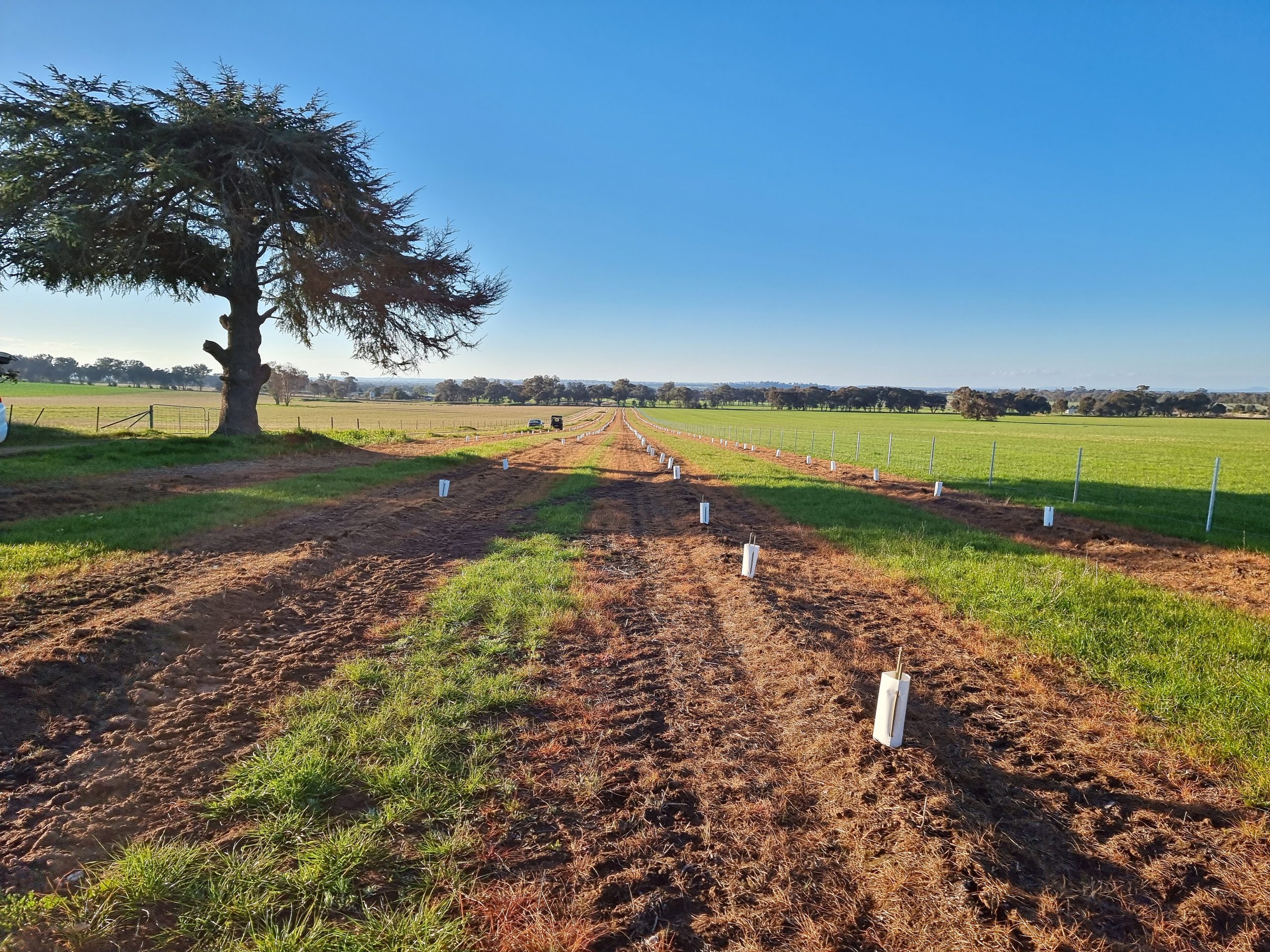
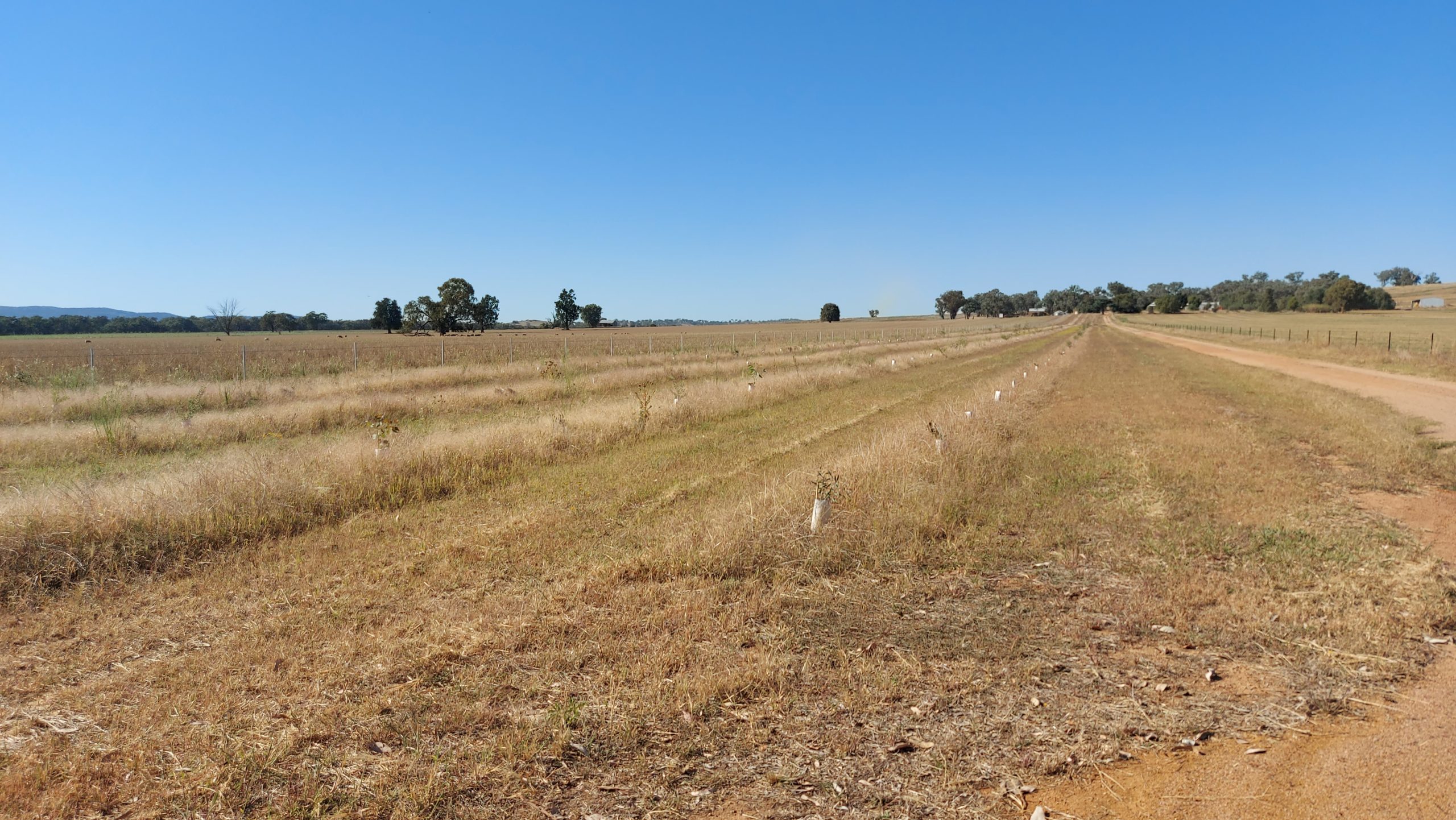
Example of a highly maintained site six months after planting (note slashing between rows). Photos: P.Sheehan (l) L.Bull (r)
Medium Term: Twelve months to Three years after planting
Annual grass and broadleaf weed growth slows and may even provide some groundcover (mulch) to improve moisture retention.
- maintain pest control of grazing pests like rabbits and hares
- monitor seedling growth and survival and plant any gaps you think are there
- weed control is possible – you can slash between rows to reduce annual weeds flowering and seeding; you can spot spray around plants if annual weed growth is excessive, but keep in mind spraying is most effective on fresh, actively growing plants, not where there is a lot of litter; targeted control of common weeds is hugely time-consuming and it is better to just target the more invasive ones, e.g., Paspalum and Phalaris, and let the revegetation shade out the others over time.
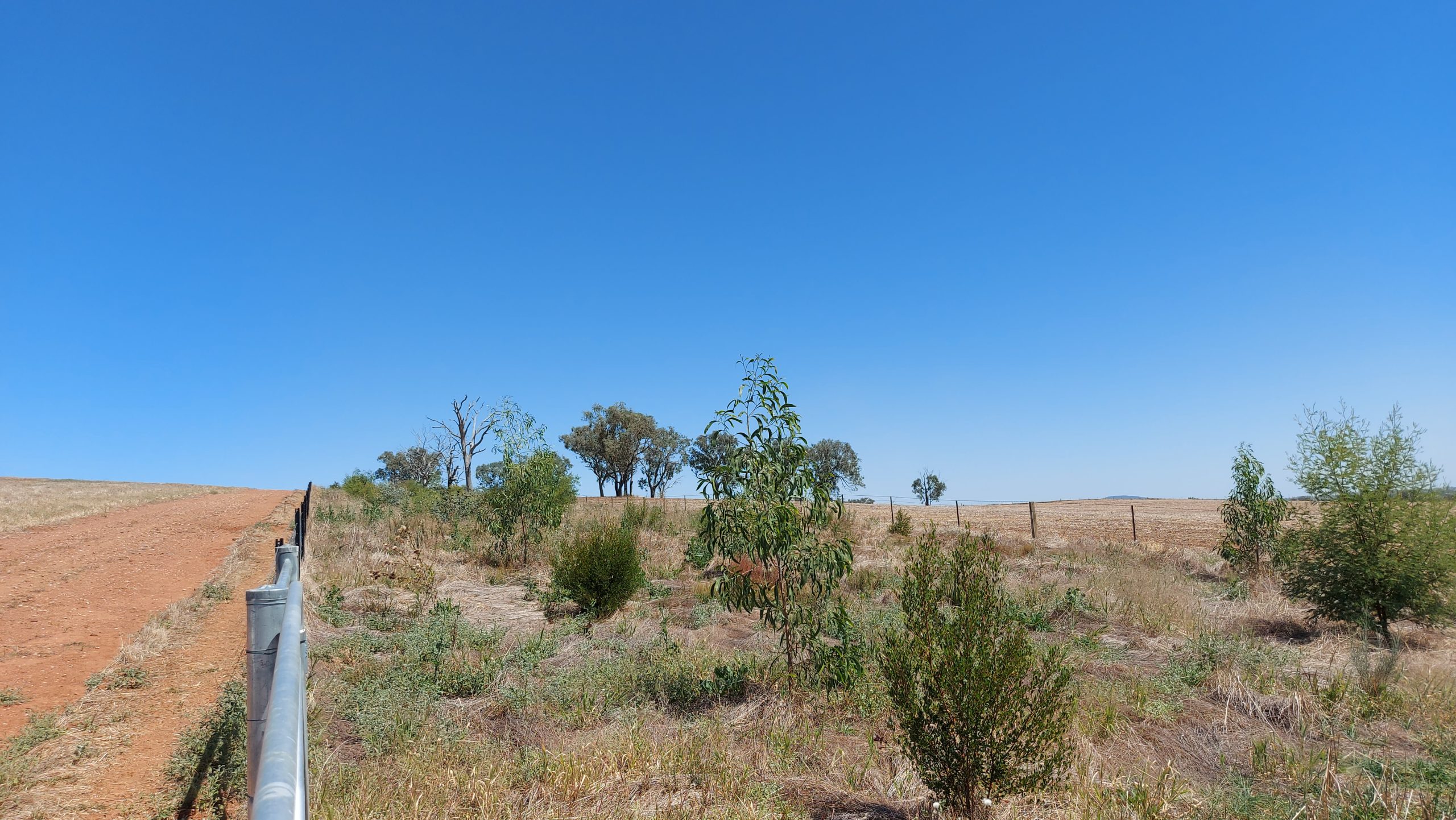
Eighteen months of seedling growth where high annual weed/grass growth starts to reduce. Photo: L. Bull
Long Term: Three to Five years after planting
Biodiversity plantings really starts to fill out after five years of growth, and small birds will start using the revegetation site. There may still be a weedy ground layer, but it is reducing. It is possible that some wattles might die but you can expect seedlings to germinate.
Avoid the temptation to graze, as that will knock out regeneration and change the sheltering value for wildlife. Plants may not be strong enough yet to withstand the pressure. It also creates disturbance and allows more weeds to germinate. Unless it was set up for grazing (e.g., shelterbelts with only trees and large shrubs), keep grazing animals out.
This could be a time to consider adding more understorey and groundlayer plants if the conditions are right.

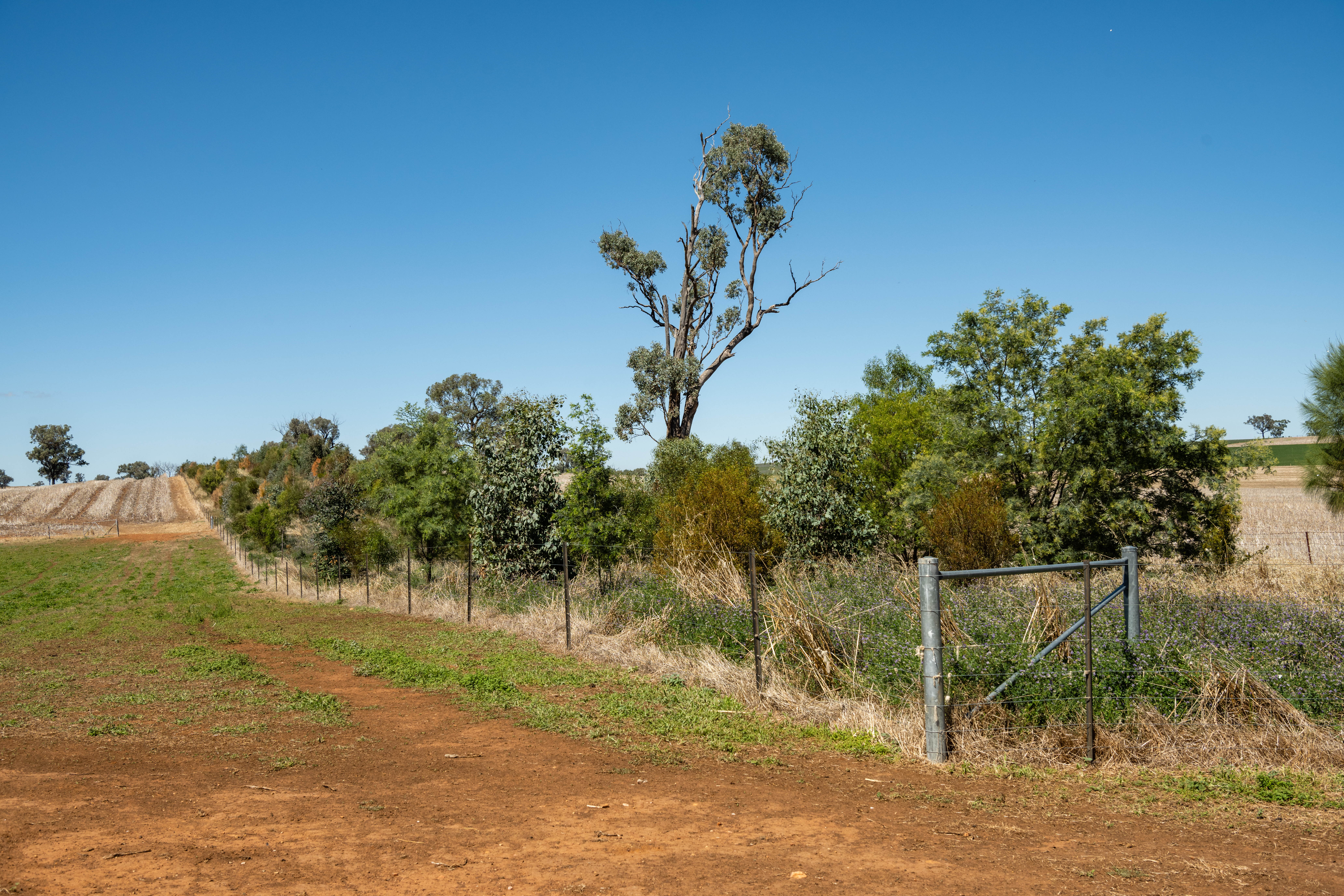
Sites – eighteen months and six years after planting. Phptps: L. Bull (l), J. Whitty (r)
Long-term annual maintenance
A revegetation site is a long-term investment from either personal or public funds. Aim to manage it for the purpose it was created, and continue to actively monitor and manage any issues that come up.
Revisit the condition of the site (Chapter 8: Monitoring) – has the condition of your site improved?
In the long term:
- continue to remove or manage woody weeds or weeds of significance that grow within the site
- maintain fence lines in good condition
- once trees have established and the annual grass is reducing in favour of litter, consider adding more understorey and groundlayer plants
- retain fallen timber and dead plant material – its great habitat
- grazing will impact the integrity of the site, but is sometimes necessary.
If you do need to graze to reduce the weedy biomass for fire or weed management, monitor grazing extremely closely.
- crash-grazing means lots of animals for hours or days, not weeks, especially in a small site
- crash-graze in spring to reduce seed set of introduced plants and weeds
- don’t graze in summer to allow any native seed set
- never graze clay soils when the profile is wet to avoid pugging damage
- consider crash-grazing intervals greater than twelve months
- groundcover should be maintained at all times – grasses or litter – aim for at least 70 per cent groundcover
- remove stock as soon as shrub damage or browsing occurs
- choosing sheep or cattle will depend on the site – cattle do a lot of physical damage to plants, especially up until they are five years old; sheep preferentially graze forbs and are harder on the groundlayer plants.
Common Issues
My site has failed – how do I fix it?
For seedling plantings, it is often difficult to judge success or failure immediately. Unless there is an obvious disaster (e.g., the gate was open) don’t be hasty to call it a bust. At the third autumn, if the outcome is really not what you wanted, consider either supplementary planting or starting again if the survival is very low. This is not easy – there is often a lot of biomass and spraying and re-ripping is really hard. It will often come down to hand planting. This is a good reason to get it right in the first place.
For direct seeding, there may be germination up to five years after the initial seeding, so again, don’t be hasty to call it a failure. After five years, if the outcome is not what you hoped for, you can look at reseeding or adding to the site with seedlings.
Remember that it’s the outcome that you wanted that’s important – 50 per cent survival in a biodiversity site may still provide better biodiversity, but 50 per cent survival in a shelterbelt planting may compromise that outcome, so the decision to replant will be different in each case.
Wattles are Short-lived – I Don't Want to Plant Them
Wattle species are a common plant used in revegetation and have many benefits, from creating fast thick cover for small birds, to nitrogen fixing in the soil. Most wattle species are short lived, they mature early and produce lots of seed that germinates and persists after the original plant has died. When wattles die, they also provide a whole other lot of food resources for birds and animals – resist the urge to ‘clean up’ dead wood and sticks in plantings for biodiversity.
When can I graze?
If your site is funded, there may be rules about when you are able to graze. In general, revegetation sites shouldn’t be grazed at all for the first five years. See also discussion above under Long term: three to five years after planting.
Grazing does impact the plants but the key factors are:
- type of livestock – sheep are generally softer on revegetation but harder on remnant sites with good groundlayer
- numbers – crash-grazing is described as a lot of animals in a small area for a short time with the aim of reducing the weedy biomass in between the plantings
- time – crash-grazing means lots of animals for hours or days, not weeks, especially in a small site
- once in twelve months is the minimum interval recommended.
How will fire affect my planting? Do I need to replant?
The effects of fire depend on the age of the planting and the severity of the fire.
Young revegetation sites (one to two years) will be most affected, as immature plants have less capacity to regrow.
Mature revegetation sites (three or more years) will often grow back after a low or moderate intensity fire and seed produced by understorey species will germinate and the site can return to its previous state.
Managing overabundant native animals – wombats and kangaroos
We have unfortunately created landscapes with abundant water and nutritious grass with less natural predation compared to pre-European landscapes, and these native grazers have greater breeding success and move to areas with shelter and abundant resources – including your revegetation areas! Overabundance of these grazers can have the same effect as overgrazing by domestic stock, and numbers may have to be controlled from time to time. Permits are issued though the National Parks and Wildlife Service – they will assess the numbers and issue the permit if required.
Mistletoe is taking over my trees
Mistletoes are not necessarily a ‘pest’– they are an important habitat feature of remnant and revegetation. Mistletoe is a good sign that your site is being used by
lots of birds, as they are the source of seed dispersal for mistletoes. Overabundant mistletoe may be a sign that your site lacks predators – Brush and Ringtail
Possums. Try adding nest boxes or artificial hollows and make sure it is connected to patches with these species in them. Mistletoe removal is not generally recommended.
Noisy Miners
Noisy Miners are native honeyeaters that are aggressive to other birds and can dominate remnant vegetation and revegetation, pushing out smaller birds. In general, they prefer open woodland habitats with simple vegetation structure (e.g., just trees) over more complex structures (e.g., with thick shrubs and
mid-storey species).
If your site is dominated by Noisy Miners the general recommendation is to increase the shrub cover, connectivity and diversity – plant thickets that are away from the canopy so they can’t dominate from above. In some cases it may be recommended to reduce numbers – get help from Landcare and/or your natural resource management agency if you are worried.
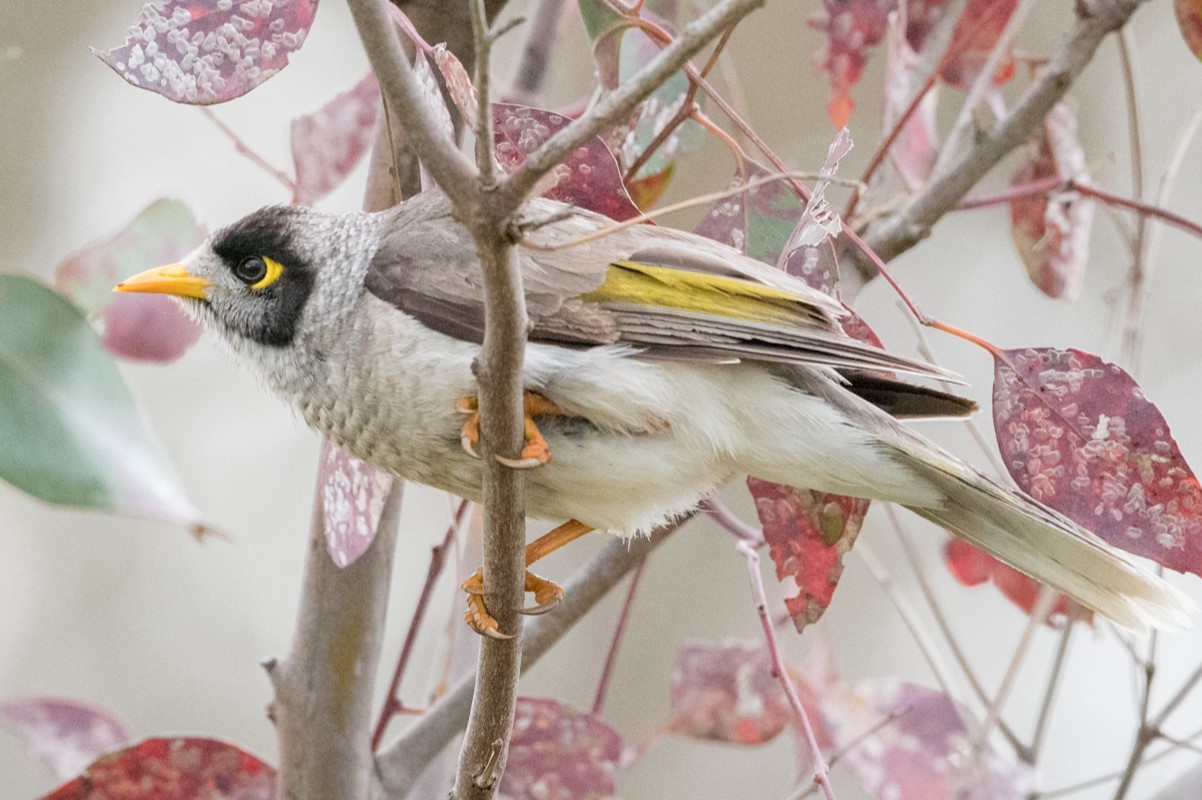
Noisy Miner – Credit: Peter Rowland
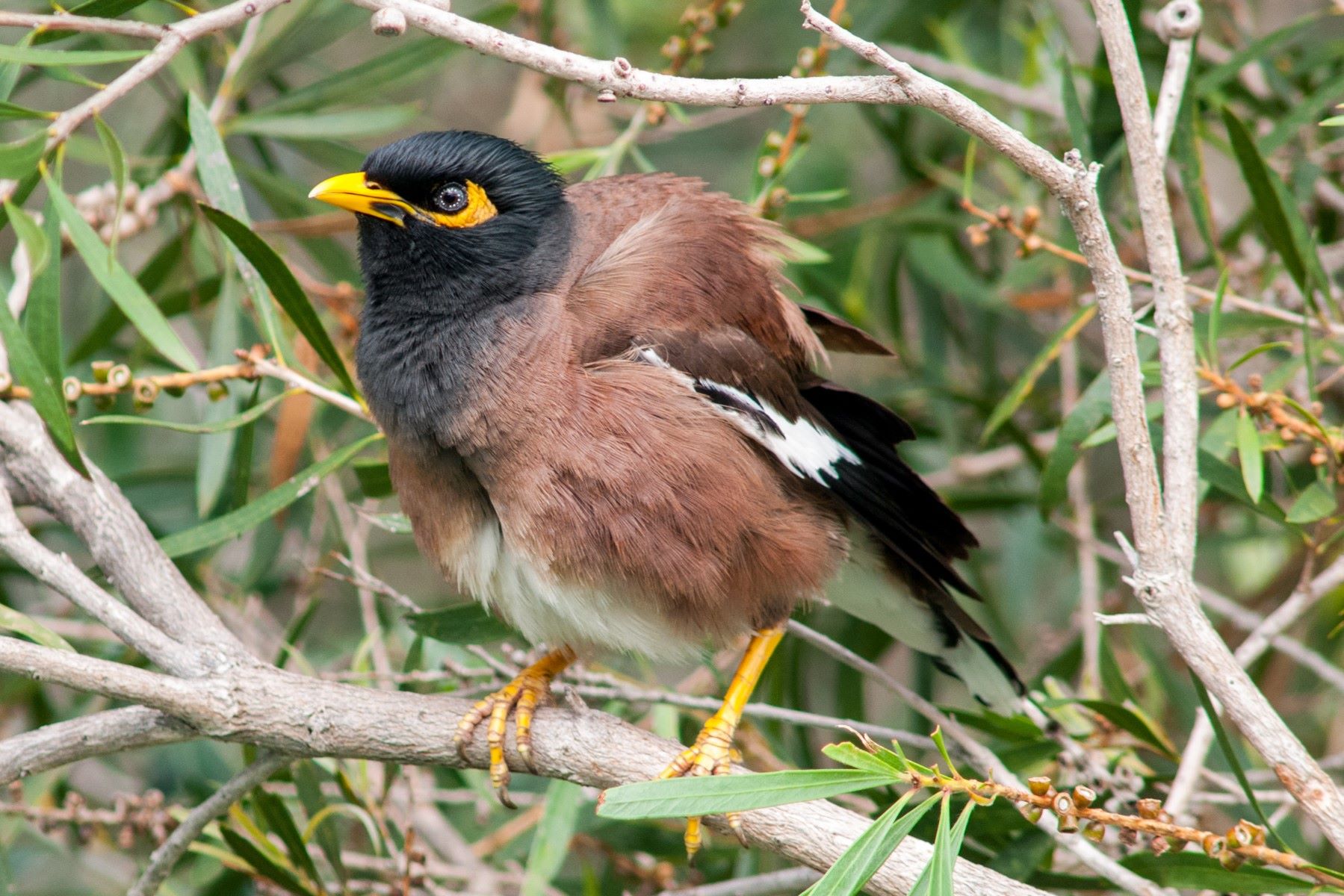
Common Myna (introduced) – Credit: Peter Rowland
The shrubs are gone, I’ve just got trees and Phalaris!
If your site has a history of fertiliser and grazing, it is very difficult to eliminate Phalaris and other invasive perennial grasses from the site; even if the site is
perfectly prepared, it can reinvade. Trees tend to cope better than understorey plants. Over time, the competition from the trees for moisture and nutrients generally results in the Phalaris decreasing and being replaced by litter layers, but unless you do very active management you may have to accept that it is there to stay. It does provide that grassy layer habitat for small birds that our tussock grasslands used to provide. Again, it depends on what your objective is – selecting better quality sites for biodiversity restoration can be more successful in the long term. In shelterbelts and general revegetation sites, Phalaris biomass can be managed with crash-grazing until it naturally reduces.
Fire as a management tool
Fire has been used as a tool for managing vegetation for a long time, both with positive and negative impacts. First Nations people used regular cool burning to keep habitat open for access and to attract prey species. Early settlers in Australia also used burning as a tool to manage vegetation for grazing and to clear for agriculture. It’s not a simple remedy for everything and the outcome from a burn depends entirely on the intensity, the season, the history and condition of the vegetation that is there in the first place.
In revegetation and restoration areas fire can be used as a tool for:
- reducing biomass as hazard reduction or as site preparation – the risk to paddock trees and valuable bits of vegetation needs to be managed by creating breaks around them and keeping fire away
- cultural reconnection by including First Nations People in restoration of the landscape
- a tool to trigger an ecological response and enhance restoration.
Hazard reduction and ecological burns require permission from the NSW Rural Fire Service, whether in the permit season or not, so you need to seek advice.
If it’s an ecological outcome you are hoping for, also seek advice from Landcare and/or your regional natural resource management agency so you can design a regime for the desired outcome. Burning can have a negative outcome sometimes, especially where there are a lot of weed species that may be encouraged.
NEVER BURN THE WHOLE SITE
– if something goes wrong, you haven’t compromised the whole site and there is potential for recovery.
Find out more…
Biodiversity Conservation Trust: Guideline for Managing Over-abundant Kangaroos – https://www.bct.nsw.gov.au/sites/default/files/2020-06/Final%20web%20version%20BCT%20Guideline%20for%20Managing%20Over-abundant%20Kangaroos.pdf
Bush Heritage Australia: New Research on Impacts of Grazing by Native Species – https://www.bushheritage.org.au/blog/new-research-sheds-light-on-impacts-of-grazing

